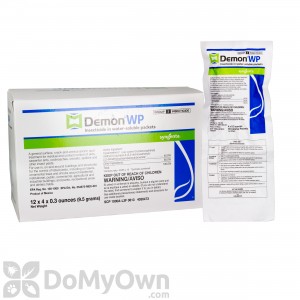An insecticide is one type of pesticide that is used to control insects by repelling, killing, or preventing reproduction. There are different forms of insecticides which target different stages of the life cycle, including: ovicides (used against eggs), larvicides (used against insect larvae) and adulticides (the most common kind of insecticide, used against fully developed adult insects). Insecticides are used in all fields of medicine, agriculture, industry, and household for various reasons to control all forms of flying and crawling insect pests.
Classes of Insecticides
There are several different ways of classifying insecticides:
- Systemic insecticides are sprayed on and absorbed by plants. Insects then ingest the insecticide while feeding on the plants.
- Contact insecticides are meant to kill insects on contact. Contact insecticides most often take the form of aerosol sprays.
- Natural insecticides are derived from plants materials. Some examples of natural insecticides include nicotine and pyrethrum.
- Inorganic insecticides are often derived from metals or arsenic-containing compounds. Some may be man-made or synthetic. Examples of inorganic insecticides include boric acid, diatomaceous earth, and silica gel.
- Organic insecticides are derived from living materials such as plant oils and fatty acids, and are thought to be the most environmentally sound among insecticides, causing no harm to humans, animals, or the earth. Organic insecticides make up the majority of pesticides available for use today.
Active Ingredients
Every insecticide has one or more "active ingredients". An active ingredient is the element in the insecticide solution that gives it its repelling or killing power. The active ingredient is always listed on the label, and at DoMyOwnPestControl.com, you can find the active ingredient of every product listed at the very top of the product page. Read more on active ingredients.
Mode of Action
Every active ingredient has a different mode of action. The mode of action is the way that the insecticide kills or repels the target pest. For example, Deltamethrin (the active ingredient in Delta Dust) kills by acting as a high-power poison to the insect's central nervous system. Once poisoned, the insect's nerve cells become excited, causing paralysis and eventual death. Hydramethylnon (the active ingredient in Maxforce Ant & Insect Bait) is one among a group of pesticides known "metabolic inhibitors". While the majority of insecticides attack the insect's central nervous system to cause nerve excitation, metabolic inhibitors like hydramethylnon attack the insect's metabolic systems, resulting in decreased energy, lethargy, and the inability to perform basic life-sustaining functions such as feeding and grooming. You can find out just how different insecticides work and determine their mode of action by searching for the active ingredient on DoMyOwnPestControl.com or the world wide web.
Insecticide Toxicity - "Follow the Label"
It's true that insecticides are generally poisonous to humans. However, there is a surefire safe way to use pesticides so that they will not harm you, your children, or your pets-- that is to follow the label. "Follow the label" is a phrase you will often find quoted by pest control professionals and others teaching about insecticide use. This is more than good advice; it is the law. Every insecticide on the legal market must first be approved by a government agency called the Environmental Protection Agency (or EPA) before it is sold. Extensive studies are conducted to guarantee that an insecticide is both effective against the target pest and safe for humans to use in and around their homes when directions on the label are adhered to.
Insecticide Formulations
Insecticides are available in various "formulations". A formulation is simply the form of a specific product that you use. Some insecticide formulations include dusts, gels, granules, liquids, aerosols, wettable powders, concentrates, and pre-mixed solutions. An insecticide formulation consists of the active ingredient plus various additives (such as emulsifiers, solvents, or other materials added to the product for ease-of-use and safety).
Any given active ingredient can often be purchased in more than one formulation. For example, the active ingredient Deltamethrin is available as a granule (DeltaGard G Granules), a suspension concentrate (Suspend SC), a dust (Delta Dust), and an aerosol (D-Force HPX). Same active ingredient, four different products. Knowing the characteristics of a given formulation will help you to choose the right product for your needs and use that product more effectively.
Read more on Insecticide Formulations
Related Articles
Crack and Crevice Pest Control
Apartment Pest Control for Tenants
General Home Pest Control
Integrated Pest Management
Insecticide Formulations 101





